Low Sodium Foods for People with High Blood Pressure (Hypertension)
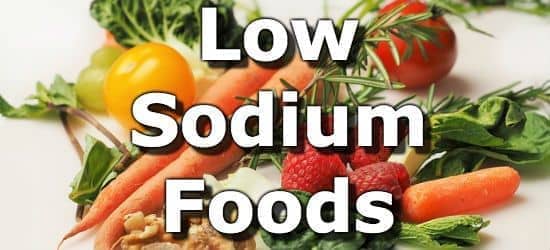
Sodium is essential for maintaining blood pressure and transmitting nerve impulses. (1)
Sodium, together with chloride forms table salt or sodium chloride. Added salt is a top source of sodium in most diets.
Over-consumption of sodium increases the risk of developing high blood pressure (hypertension), which in turn increases the risk of heart disease. (2,3)
If you have high blood pressure you should restrict your consumption of sodium while increasing your consumption of potassium. (4,5,6)
The current daily value (DV) for sodium is 2300mg (7), however, the American Heart Association recommends that people with high blood pressure eat less than 1500mg per day or less than 3/4 of a tablespoon of salt. (8)
Fortunately, almost all foods are naturally low in sodium so it is easy to avoid consuming sodium if you stick to eating whole unprocessed foods without adding any salt or sauces. A low sodium diet is more of an exercise in avoiding high sodium foods, than eating low sodium foods.
Healthy low sodium foods include vegetables, fruits, beans, grains, legumes, nuts, meats, oils, and fish. Be sure foods are not canned, or otherwise prepared with salt, or sauces that contain salt. Below is a list of the top 10 foods lowest in sodium for your blood pressure diet.
List of Low Sodium Foods
-
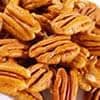 1. Pecans + Add
1. Pecans + Add
Sodium
per OzSodium
per 100gSodium
per 200 Calories0mg
(0% DV)0mg
(0% DV)0mg
(0% DV)More Low Sodium Nuts
- 0% DV in 1 oz of almonds
- 0% DV in 1 oz of pistachios
- 0% DV in 1 oz of walnuts
Low sodium numbers only apply to unsalted nuts.
See the full list of nuts low in sodium.
-
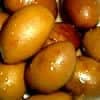 2. Olive Oil + Add
2. Olive Oil + Add
Sodium
per TablespoonSodium
per 100gSodium
per 200 Calories0.1mg
(0% DV)2mg
(0% DV)0.5mg
(0% DV)More Low Sodium Oils
- 0% DV in 1 tblsp of peanut oil
- 0% DV in 1 tblsp of sesame oil
- 0% DV in 1 tblsp of rice bran oil
See the full list of low sodium fats and oils.
-
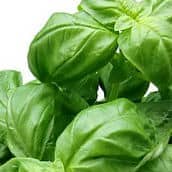 3. Basil + Add
3. Basil + Add
Sodium
2 TblspSodium
per 100gSodium
per 200 Calories0.2mg
(0% DV)4mg
(0% DV)34.8mg
(2% DV)More Low Sodium Herbs
- 0% DV in 1 tsp of thyme
- 0% DV in 1 tsp of rosemary
- 0% DV in 1 tsp of dried oregano
See the full list of spices and herbs low in sodium.
-
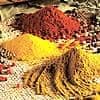 4. Cinnamon + Add
4. Cinnamon + Add
Sodium
1 TblspSodium
per 100gSodium
per 200 Calories0.8mg
(0% DV)10mg
(0% DV)8.1mg
(0% DV)More Low Sodium Spices
- 0% DV in 1 tsp of pepper
- 0% DV in 1 tsp of cayenne pepper
- 0% DV in 1 tsp of nutmeg
See the full list of spices and herbs low in sodium.
-
5. Apples + Add
Sodium
per CupSodium
per 100gSodium
per 200 Calories1.3mg
(0% DV)1mg
(0% DV)3.8mg
(0% DV)More Fruits Low in Sodium
- 0% DV in 1 cup of cherries
- 0% DV in 1 cup of bananas
- 0% DV in 1 tsp of oranges
Almost all fruits are low in sodium. See the full list of 146 low sodium fruits.
-
6. Green (Snap) Beans + Add
Sodium
per Cup CookedSodium
per 100gSodium
per 200 Calories1.3mg
(0% DV)1mg
(0% DV)5.7mg
(0% DV)More Vegetables Low in Sodium
- 0% DV in 1 cup of cucumber
- 0% DV in 1 cup of peas
- 1% DV in 1 cup of spinach
Almost all vegetables are low in sodium. See the full list of 200 low sodium vegetables.
-
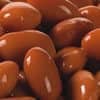 7. Kidney Beans + Add
7. Kidney Beans + Add
Sodium
per CupSodium
per 100gSodium
per 200 Calories1.8mg
(0% DV)1mg
(0% DV)1.6mg
(0% DV)More Beans and Lentils Low in Sodium
- 0% DV in 1 cup of navy beans
- 0% DV in 1 cup of pinto beans
- 1% DV in 1 cup of black beans
Note: Note: Beware of high sodium levels in canned beans with added salt.
See the full list of beans low in sodium.
-
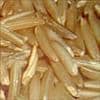 8. Brown Rice + Add
8. Brown Rice + Add
Sodium
per CupSodium
per 100gSodium
per 200 Calories2mg
(0% DV)1mg
(0% DV)1.8mg
(0% DV)More Grains Low in Sodium
- 0% DV in 1 cup of oatmeal
- 0% DV in 1 cup of cornmeal (grits)
- 1% DV in 1 cup of quinoa
See the full list of grains low in sodium.
-
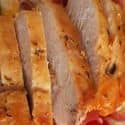 9. Lean Chicken Breast + Add
9. Lean Chicken Breast + Add
Sodium
in a 6oz BreastSodium
per 100gSodium
per 200 Calories79.9mg
(3% DV)47mg
(2% DV)59.9mg
(3% DV) -
 10. Salmon + Add
10. Salmon + Add
Sodium
per 6oz FilletSodium
per 100gSodium
per 200 Calories95.2mg
(4% DV)56mg
(2% DV)61.5mg
(3% DV)Other Fish Low in Sodium
- 3% DV in a trout fillet
- 4% DV in a tuna fillet
- 4% DV in a salmon fillet
See all fish low in sodium.
From the Nutrient Ranking Tool
Use the ranking tool links below to select foods and create your own food list to share or print.
- Foods High in Sodium
- Foods Low in Sodium
- Vegetables High in Sodium
- Fruits High in Sodium
- Vegetarian Foods High in Sodium
- Nuts High in Sodium
- Grains High in Sodium
- Beans High in Sodium
- Dairy High in Sodium
- Breakfast Cereals High in Sodium
- Fast Foods High in Sodium
View more nutrients with the nutrient ranking tool, or see ratios with the nutrient ratio tool.
Related
Data Sources and References
- Goyal R, Jialal I. Electrolytes 2023 Jun 12. In: StatPearls [Internet]. Treasure Island (FL): StatPearls Publishing; 2024 Jan–. 31869067
- He FJ, MacGregor GA. Effects of High Salt Intake on Blood Pressure and Cardiovascular Disease: The Role of COX Inhibitors J Hum Hypertens. 2009 Jun;23(6):363-84. doi: 10.1038/jhh.2008.144. Epub 2008 Dec 25. 19110538
- Piccirillo G, Bucca C, Durante M, Santagada E, Munizzi MR, Cacciafesta M, Marigliano V. Sodium Intake and Hypertension Hypertension. 1996 Dec;28(6):944-52. doi: 10.1161/01.hyp.28.6.944. 8952581
- Fodor JG, Whitmore B, Leenen F, Larochelle P. Salt and hypertension: is salt dietary reduction worth the effort? CMAJ. 1999 May 4;160(9 Suppl):S29-34. 10333851
- Brand A, Visser ME, Schoonees A, Naude CE. Effect of low sodium and high potassium diet on lowering blood pressure and cardiovascular events Cochrane Database Syst Rev. 2022 Aug 10;8(8):CD015207. doi: 10.1002/14651858.CD015207. 35944931
- Skrabal F, Auböck J, Hörtnagl H, Braunsteiner H. Low sodium/high potassium diet for prevention of hypertension: probable mechanisms of action Clin Sci (Lond). 1980 Dec;59 Suppl 6:157s-160s. doi: 10.1042/cs059157s. 7004723
- U.S.FDA - Daily Value on the New Nutrition and Supplement Facts Labels
- Ströhle A. [Sodium intake, blood pressure and cardiovascular events] Int J Vitam Nutr Res. 2017 Sep;87(5-6):322-329. doi: 10.1024/0300-9831/a000257. Epub 2018 Oct 9. 30299218
Simplify Nutrition Tracking with MyFoodData!
Speedy Tools and Detailed Data FREEEasily analyze your meals to find the best foods for your goals.
✅ Use our recipe nutrition calculator and nutrition comparison tool.
✅ Access expert nutrition data tools and in-depth articles.
✅ Log foods and organize your recipes with a free account.


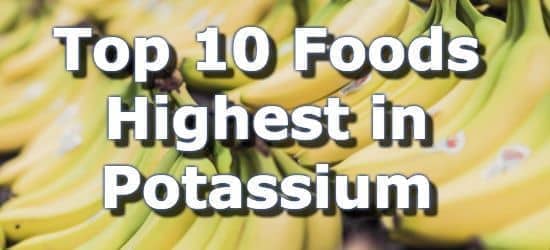 Next ➞
Next ➞
